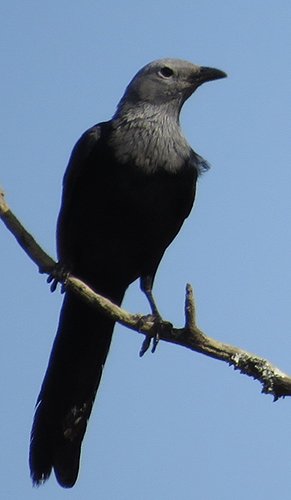Federal Republic of Somalia

Birding Somalia
Somalia, officially the Republic of Somalia and formerly known as the Somali Democratic Republic, is a country located in the Horn of Africa. It is bordered by Djibouti to the northwest, Kenya on its southwest, the Gulf of Aden with Yemen on its north, the Indian Ocean at its east, and Ethiopia to the west.
Somalia has the longest coastline on the continent.Somalia’s terrain consists mainly of plateaus, plains, and highlands. In the far north, however, the rugged east-west ranges of the Karkaar Mountains lie at varying distances from the Gulf of Aden coast.
Major climatic factors are a year-round hot climate, seasonal monsoon winds, and irregular rainfall with recurring droughts. Mean daily maximum temperatures range from 30 °C to 40 °C (85–105 °F), except at higher elevations and along the east coast. Mean daily minimums usually vary from about 15 °C to 30 °C (60–85 °F). The southwest monsoon, a sea breeze, makes the period from about May to October the mildest season at Mogadishu. The December-February period of the northeast monsoon is also relatively mild, although prevailing climatic conditions in Mogadishu are rarely pleasant. The “tangambili” periods that intervene between the two monsoons (October–November and March–May) are hot and humid.
Somalia is a semi-arid country with about 2% arable land. The civil war had a huge impact on the country’s tropical forests by facilitating the production of charcoal with ever present, recurring, but damaging droughts. Somali environmentalist and Goldman Environmental Prize winner, Fatima Jibrell, became the first Somali to step in and do a much-needed effort to save the rest of the environment through local initiatives that organised local communities to protect the rural and coastal habitat. Jibrell trained a team of young people to organise awareness campaigns about the irreversible damage of unrestricted charcoal production. Jibrell also joined the Buran rural institute that formed and organised the Camel Caravan program in which young people loaded tents and equipment on camels to walk for three weeks through a nomadic locale and educate the people about the careful use of fragile resources, health care, livestock management and peace.
-
Wikipedia
GNU Free Documentation License
http://en.wikipedia.org/wiki/Somalia
-
Number of bird species: 727
(As at September 2018)
Number of endemics: 9
Somali Pigeon Columba oliviae Archer's Buzzard Buteo archeri Coastal Boubou Laniarius nigerrimus Lesser Hoopoe-Lark Alaemon hamertoni Ash's Lark Mirafra ashi Obbia Lark Spizocorys obbiensis Somali Thrush Turdus ludoviciae Somali Grosbeak Rhynchostruthus louisae Warsangli Linnet Linaria johannis
-
iGoTerra Checklist
iGoTerra ChecklistFatbirder Associate iGoTerra offers the most comprehensive and up to date birds lists on the web
-
Birds of Somalia
By John Ash, John Miskell & Martin Woodcock | Bloomsbury | 2013 | Hardback | 336 pages, 4 plates with colour illustrations; b/w photos, 6 b/w illustrations, 654 b/w distribution maps, 3 colour & 1 b/w map | ISBN: 9781408190319 Buy this book from NHBS.com -
Birds of the Horn of Africa
by Nigel Redman, Terry Stevenson & John Fanshawe | Chrisdtopher Helm | 2011 | Paperback | 512 pages, 213 colour plates, 1000+ colour distribution maps, colour & b/w maps | ISBN: 9781408157350 Buy this book from NHBS.com
-
African Bird Club
WebsiteWith a list of 660 or so species including a good number of endemics and near endemics, birds with wonderfully evocative names such as Bulo Burti Bush-Shrike Laniarius liberatus (see notes in the section on species) and Warsangli Linnet Carduelis johannis and an incredible selection of at least 24 lark species, this could be a birdwatcher
-
IBAs
WebsiteSatellite ViewThree endemic bird areas fall entirely within Somalia: the Central Somali coast; the North Somali mountains; the north-west Somalia secondary area. In addition, parts of the East African coastal forests, the Jubba and Shabeelle valleys and the Northern Ethiopia secondary area lie within Somalia -
NP Kismayo
InformationSatellite ViewKismayo National Park (KNP) is a national park in Kismayo, Somalia, also known as Haabar Waalid. During the drought previous government had built pawns or mini lakes to avoid migration, some says leapords and other predators and most impalas elephants never migrated do to availability of water all years,the only time most migrated is when country was in war itself. -
NP Lag Badana
InformationSatellite ViewThe Lag Badana area contains over 200 vascular plant species and is home to rare animals like lesser kudu. Of the plants, around 20 are endemic -
NR Alifuuto
Observatory WebsiteSatellite View -
NR Balcad
InformationSatellite ViewBalcad Nature Reserve is located on the eastern bank of the Shabeelle river, 35 km north of Muqdisho and immediately south of the town of Balcad. The site consists of one of the few patches of riverine forest remaining on the Shabeelle river and the surrounding scrub savanna. Some 200 bird species have been recorded from the site. The only known individual of Laniarius liberatus was released from captivity here. Of the Somali–Masai biome species, Turdus tephronotus, Uraeginthus cyanocephalus and Ploceus dichrocephalus have been recorded nationally from few other IBAs.
-
2012 [06 June] - Charles Davies
Report… This is an area of pink, rocky ground on low hills, with some Acacia scrub, including some funny disk-like Acacias growing flat on the ground. Our best sightings at this spot were a Somali Wheatear and a couple of Little Brown Bustard. Abdi was slightly worried about whether we would find the wheatear—his groups normally see many much further west towards the border with Djibouti and stop focusing on this species further east, but in the end we saw about 15 during the trip in rocky semi-desert areas from this site all the way east to Erigavo town….

